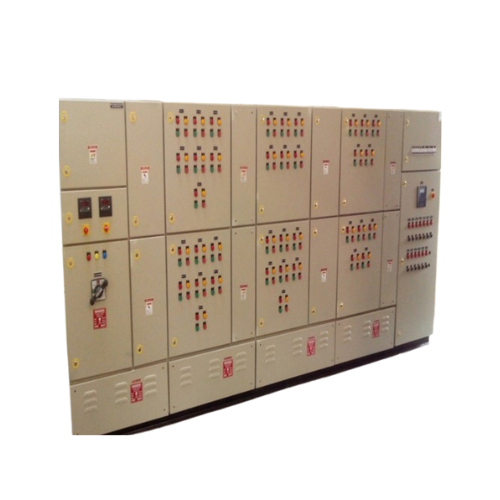Introduction
In modern electrical systems, maintaining an optimal power factor is essential for efficient energy usage and cost reduction. One of the most effective solutions for improving power factor and overall system performance is the Automatic Power Factor Correction (APFC) Panel. These panels help in reducing reactive power demand, minimizing energy losses, and ensuring the smooth operation of electrical equipment.
What Is an APFC Panel?
An APFC Panel is an electrical control panel designed to regulate and optimize the power factor in an electrical system by automatically switching capacitor banks based on the system’s reactive power demand. This ensures that power factor remains within the desired range, reducing wastage and improving efficiency.
Importance of APFC Panels in Power Factor Enhancement
1. Improved Energy Efficiency
APFC Panels enhance energy efficiency by reducing reactive power demand, which in turn minimizes energy losses and enhances the overall performance of electrical systems.
2. Reduced Electricity Bills
Power utilities impose penalties for poor power factor. APFC Panels help maintain an optimal power factor, reducing penalties and leading to lower electricity costs for industrial and commercial users.
3. Automatic Power Factor Adjustment
Unlike manual capacitor banks, APFC Panels automatically adjust power factor in real time by switching capacitors on or off as required. This ensures a continuous and optimal power factor without human intervention.
4. Increased Equipment Lifespan
By maintaining a stable power factor, APFC Panels reduce voltage fluctuations, overheating, and excessive current draw, thereby extending the lifespan of electrical appliances and machinery.
5. Minimized Overloading and Downtime
A well-regulated power factor reduces strain on electrical infrastructure, preventing transformer and generator overloading. This minimizes downtime and enhances the reliability of power distribution systems.
6. Compliance with Power Regulations
Many regulatory bodies mandate maintaining a specific power factor level. APFC Panels ensure compliance with these standards, helping businesses avoid penalties and maintain energy efficiency.
Applications of APFC Panels
APFC Panels are widely used across various sectors, including:
- Industrial Plants: Factories and manufacturing units use APFC Panels to manage large inductive loads and reduce energy costs.
- Commercial Buildings: Offices, malls, and hotels benefit from improved power efficiency and lower electricity bills.
- Hospitals and Educational Institutions: These facilities use APFC Panels to ensure stable power quality and prevent voltage instability.
- Renewable Energy Systems: Solar and wind power setups integrate APFC Panels to regulate power factor and improve energy conversion efficiency.
Conclusion
APFC Panels play a crucial role in enhancing power factor, reducing energy costs, and improving overall system efficiency. Whether in industrial, commercial, or renewable energy applications, investing in an APFC Panel is a smart choice for businesses looking to optimize energy usage and maintain a stable power supply.
For organizations aiming to improve their power factor and reduce operational expenses, installing an APFC Panel is a key step toward achieving energy efficiency and sustainability.


